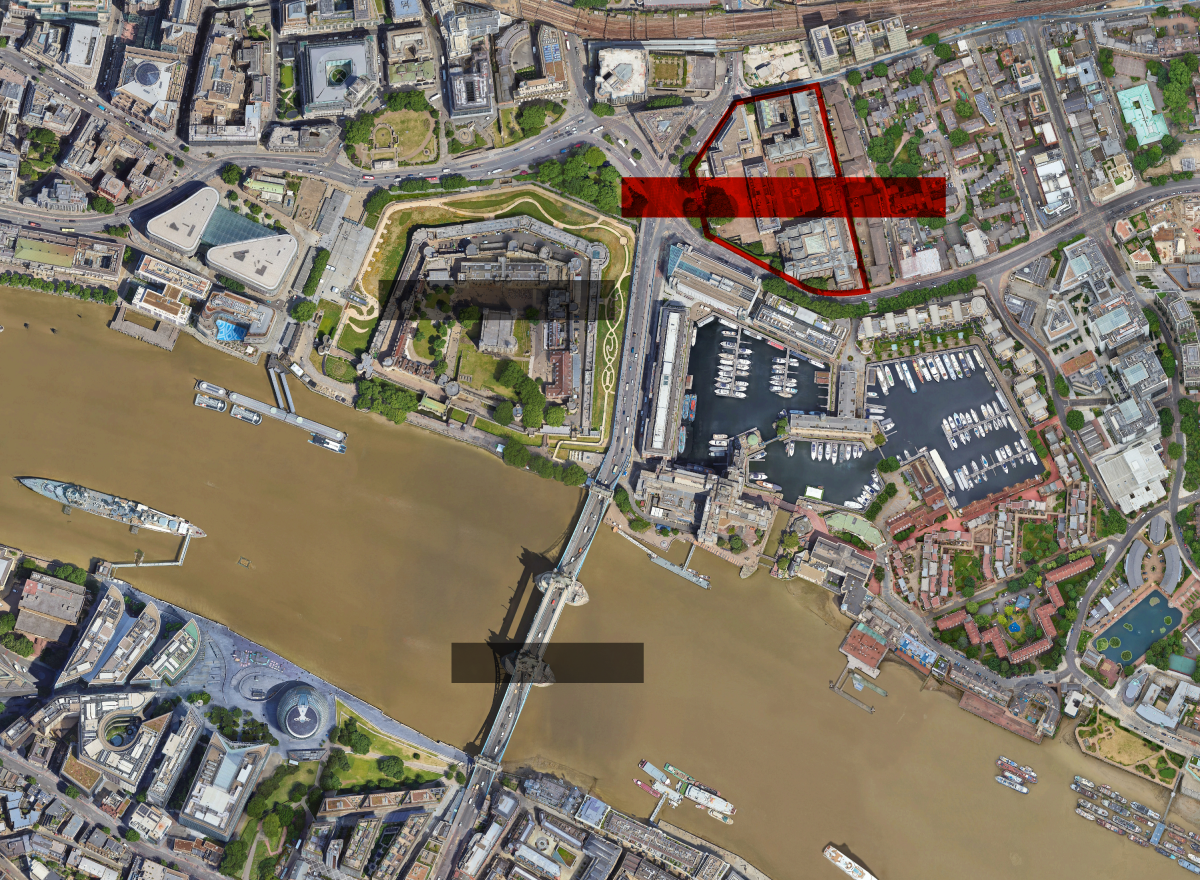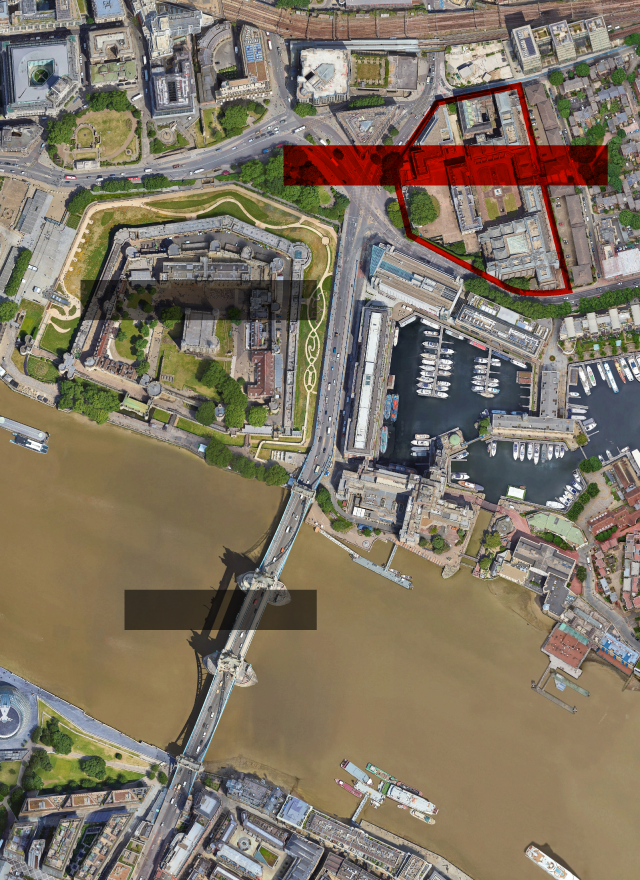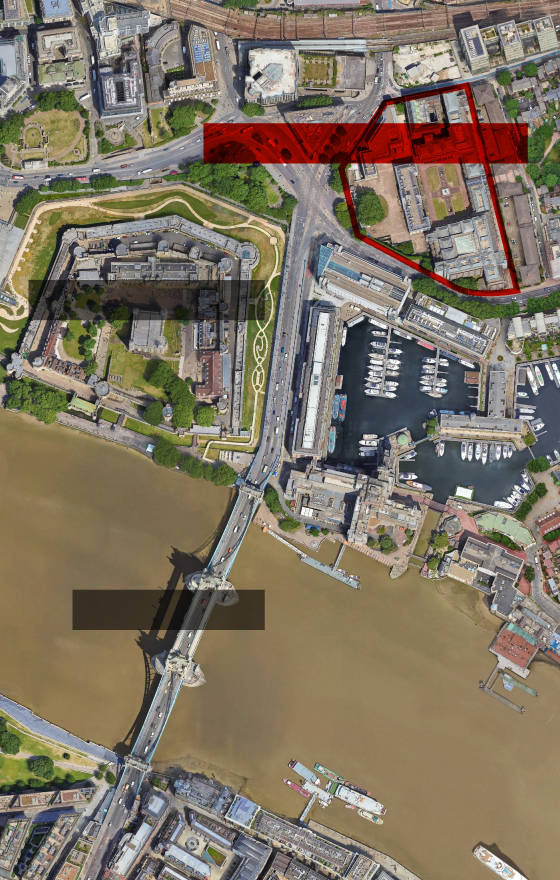China plants its flag next to the Tower of London
Beijing presses Downing Street to open mega-embassy in historic building in east London


LondonThe planned opening of a new Chinese embassy in the United Kingdom – which will be one of the largest in the world – and which is expected to be located next to the Tower of London, has raised the residents of the East Smithfield district, on the north bank of the River Thames, up in arms. The Royal Mint is located there, a neoclassical monumental complex from the beginning of the 19th century, where the coins in legal circulation in the United Kingdom were minted until 1968, as well as other commemorative coins. Since then, the space has had different uses. First, it was linked to the historical centre of the medieval city where the museum of the old die house is already located; and then, from the mid-1980s, it was used for a partial renovation of the area.
A hundred flats and a couple of commercial premises were created – a nursery and a hairdresser's shop still exist – and the two historic buildings were used as a number of local government and Treasury services, as well as law firms. The flats, opened by Queen Elizabeth in 1989, were intended for key public sector workers – nurses, teachers and police officers.
The new residents were granted a lease on the land on which the flats stood for a period of 126 years. This is standard practice in British property law, where the tenants of a house or flats in a building may be the owners or tenants, but another entity – often the Crown Estate, which is the country's largest property agent – owns the land on which they stand. Standard leases for the land on which the flats stand are the same as those on which the flats stand. leasehold, as the right to use a lease is called in English, are usually only 99 years. These were much more favorable.
Privatization
But in 2010, the 20,000 square metres of land were privatised, ending Crown ownership, which dated back to 1539, when it purchased the Cistercian abbey of St Mary Graces, founded by King Edward III in 1350.
In 2018, less than three years after the state visit with which Chinese President Xi Jinping was honoured by then-British Prime Minister David Cameron, Beijing bought the land where the medieval Royal Mint now stands, thus planting the Chinese flag in one of the corners of London most closely linked to the power and history of the Crown.
China paid just over 300 million euros for the land to its then owners, an alliance of companies formed by the real estate investor Delancey and the investment fund LRC Group, also specialising in real estate businesses. At the time they bought them, they wanted to develop super-luxury housing and exclusive services for a high-income population, ideally made up of paid City workers, very close to the Royal Mint. But the stumbling block of the hundred social flats finally made Delancey and LRC Group accept China's offer.
Beijing's intention is to build its new embassy in London on this site. If the plans go ahead, it will be one of its largest embassies in the world and the largest in Europe. China and the United States would look at each other, with suspicion, from both sides of the Thames. During his first term, Donald Trump inaugurated the new US embassy in Battersea.
Two weeks ago, just over a thousand people, including many refugees from Hong Kong and residents of flats from the late 1980s, demonstrated outside the Royal Mint against the planned Chinese mega-embassy. They claimed all kinds of security problems if it were to come to fruition: fear of being spied on, but also traffic problems in the surrounding streets if protests by all kinds of activists against the Beijing regime were to multiply in the area.
There are around 280,000 Hong Kong citizens living in the UK, which has left the former British colony since the tightening of laws
According to the 2021 census, 121,000 Chinese citizens also live on the islands. And in the 2022-23 academic year, more than 150,000 students were studying at British universities, who pay very high fees, and who are manna for institutions that are increasingly struggling financially due to the lack of financial support from the government.
In 2022, against all odds, the local planning council of the Tower Hamlets district, where the East Smithfield neighbourhood is located, vetoed the development project for the new legation, led by architect David Chipperfield.
But after the Labour victory last July, China has sent the development plans of the diplomatic representation again, trusting that the resumption of the relationship with the new government in London would make it possible to give the green light to the project. Although it could have done so, Rishi Sunak's government never intervened in the matter.
All this has become a new mess for Downing Street. Very harsh voices from the conservative opposition want to maintain the veto, while China is the rival to beat. But at the end of November Xi Jinping asked Keir Starmer for the direct intervention of the government to find a satisfactory solution to the interests of Beijing.
Both the Minister of the Interior, Yvette Cooper, and the Foreign Minister, David Lammy, have expressed a favourable opinion, a kind of gesture of goodwill towards the Asian giant. The matter now remains in the hands of the Deputy Prime Minister and Minister of Housing and Urban Development, Angela Rayner. She must make a decision in the coming weeks. But no one doubts that a large Chinese embassy in London will soon be a reality.
A few neighbours and a neighbourhood in east London have become one more of the bargaining chips that Downing Street offers to Beijing to maintain good relations. Unlike what they did in 2015, when they rolled out the red carpet for Xi Jinping, the Conservatives are now up in arms.



